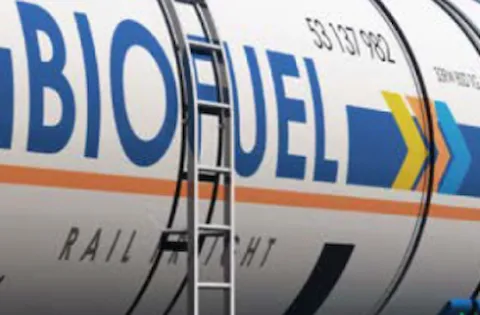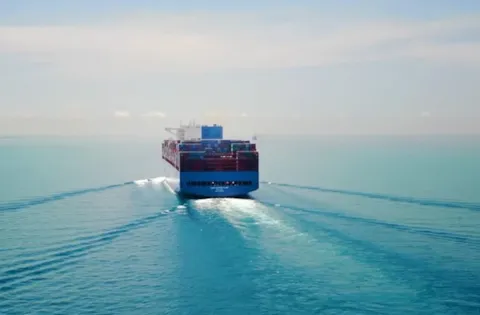Use of biofuels in international shipping
The use of biofuels or biofuel blends is one of many ways to comply with the IMO’s strategy on the reduction of GHG emissions from ships, and DNV has seen an increasing interest in these new fuels. This technical news aims to clarify the regulatory status and other considerations on the usage of such fuels.
Relevant for shipowners, managers, seafarers, maritime training institutes and flag states.
DNV has received many requests regarding the safe operation of ships using biofuels and/or biofuel blends and how to comply with international regulations when using these fuels. Below is a summary of regulatory issues, safety and operational aspects:
Types of biofuels
Three types of biofuels are relevant for maritime shipping:
- FAME (Fatty acid methyl ester) is produced from vegetable oils, animal fats or waste cooking oils by transesterification, where various oils (triglycerides) are converted to methyl esters. This is the most widely available type of biodiesel in the industry and is often blended with regular marine diesel. International standards: ISO 8217:2017, EN 14214, ASTM D6751, EN 590
- BTL (Biomass to liquid) fuels are synthetic fuels that are produced from biomass by means of thermo-chemical conversion using the Fischer-Tropsch process or the methanolto-gasoline process. The final product can be fuels that are chemically different from conventional fuels such as gasoline or diesel but can also be used in diesel engines. International standards: EN 16709, EN 15940
- HVO/HDRD (Hydrogen vegetable oil / Hydrogenation derived renewable diesel) is the product of fats or vegetable oils – alone or blended with petroleum – refined by a hydrotreating process known as fatty acids-to-hydrocarbon hydrotreatment. Diesel produced using this process is often called renewable diesel to differentiate it from FAME biodiesel. HVO/HDRD can be directly introduced in distribution and refuelling facilities as well as existing diesel engines without any further modification. International standards: ASTM D 975
Currently, FAME is the most prominently used biofuel in marine applications. It is either used in blends with traditional petroleum fuels or as 100% biofuel
Biofuels and their effect on GHG regulations: EEDI/EEXI, CII, EU MRV
- EEDI and EEXI
The EEXI and EEDI only consider the so-called tank-to-wake approach, meaning that only the carbon content of standard reference fuels the vessel is designed for is considered. For that reason, the usage of biofuels has no effect on the EEXI or the EEDI. - CII (Carbon Intensity Index)
In view of IMO DCS reporting as well as the CII calculation methodology – as per the interim guidance on the use of biofuels under regulations 26, 27 and 28 of MARPOL Annex VI (MEPC.1/Circ.905), biofuels certified by an international certification scheme, meeting sustainability criteria and providing a well-to-wake GHG emissions reduction of at least 65% compared to the well-to-wake emissions of fossil MGO of 94 gCO2e/MJ, may be assigned a Cf equal to its emissions intensity as confirmed through certification (Proof of Sustainability opr similar documentation), multiplied by its lower calorific value.
Cf value for fuel blends should be considered based on weighted average of the Cf for respective amount of fuels by energy.
Biofuels that are not certified or exceed the well-to-wake GHG intensity criterion of 33 gCO2e/MJ (i.e., providing reduction of less than 65%) should be assigned the Cf of its fossil fuel equivalent.
Above mentioned approach will be rescinded immediately upon operationalization of a well-to-wake GHG methodology through the IMO LCA Guidelines. - EU MRV
As per Regulation (EU) 2015/757, in case of alternative fuels, the monitoring plan shall contain “the methodologies for determining the emission factors, including the methodology for sampling, methods of analysis and a description of the laboratories used, with the ISO 17025 accreditation of those laboratories, if any”. It is worth noting that Directive (EU) 2018/2001 (EU RED II), Annex V, Part C provides a methodology for greenhouse gas emissions from the production and use of transport fuels, whereas per point 13, the CO2 emissions of the fuel in use shall be taken to be zero for biofuels and bioliquids.
The proposed method for calculation of the CO2 emission factor for biofuel and biofuel blends should be included in the ship’s MRV Monitoring Plan along with an addition to the list of fuel types used and method for determination of fuel density, with the revised plan being subject to acceptance from the Accredited Verifier, such as DNV.
In light of the upcoming revision of MRV Annexes, European legislation will enforce a specific approach addressing accounting of emissions from use of biofuels in MRV.
In summary:
Biofuels and their effect on NOx regulations in IMO MARPOL Annex VI
On 10 June 2022, the Marine Environment Protection Committee approved Unified Interpretations (UIs) to Regulation 18.3 of MARPOL Annex VI simplifying the use of biofuels on board ships. It is now generally assumed that marine diesel engines certified in accordance with MARPOL Annex VI Regulation 13 should be permitted to use most liquid biofuels without the challenge of emission testing on board.
There is no need for applying an exemption according to MARPOL Annex VI Regulation 3 for testing the use of biofuels, and there is no need to follow the equivalency procedure under Regulation 4 of the Annex VI to the MARPOL Convention.
A self-check according to the Onboard Verification Procedure (to be found in the engine-specific Technical File) would be sufficient to demonstrate that biofuels do not “cause an engine to exceed the applicable NOx emission limit”.
Appendix 1 contains more details on the application of Regulation 18.3 of MARPOL Annex VI.
Technical items to be observed and challenges on board
These are some of the possible consequences from the use of biofuels:
- Microbial growth: Bacteria and mould may grow, causing filters and piping to clog.
- Oxygen degradation: Biodiesel could form deposits in piping and engine, compromising operational performance.
- Low temperature: The higher cloud point may lead to the clogging of filters at lower temperatures.
- Corrosion: Some types of hoses and gaskets could degrade, leading to loss of integrity, and interact with some metallic material to form deposits.
- Possible degeneration of rubber sealings, gaskets and hoses: Important to verify that these components can be used together with biofuel.
- Conversion: When switching from diesel to biofuel, fuel filters can become clogged.
DNV support
As your DCS verifier, DNV can support you in communication with the flag administration on biofuel topics to support the inclusion of biofuels into your fuel oil consumption reports and CII ratings.
Recommendations
We advise our customers to contact DNV at an early stage to evaluate the individual impact of the intended biofuel usage and to assess the most practical way to ensure safe ship operation whilst staying in compliance with international regulations.
References
- Decarbonize shipping - information hub
- MRV topic page
- DCS topic page
- EEXI topic page
- MARPOL Annex VI Regulation 18
- MARPOL Annex VI Regulation 19
- Resolution MEPC.352(78)
- MEPC.1/Circ.905
Contact
- For customers:
DATE - Direct Access to Technical Experts via My Services on Veracity. - Otherwise:
Use our office locator to find the nearest DNV office.

